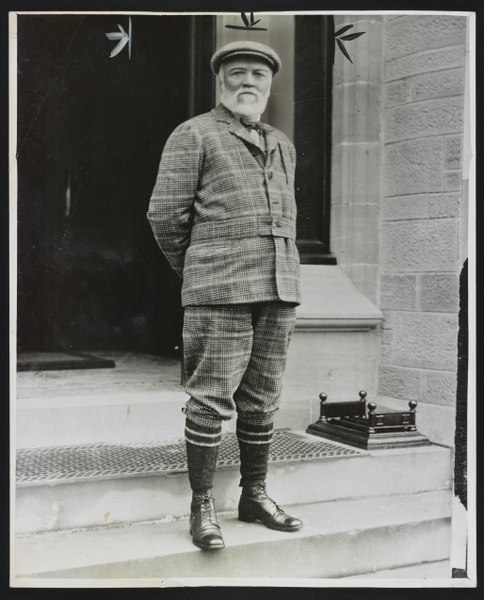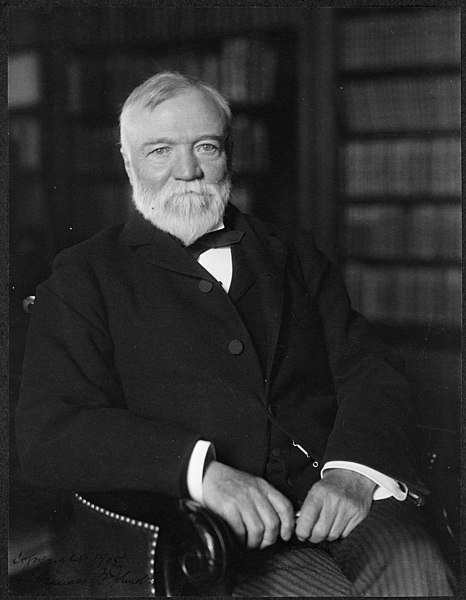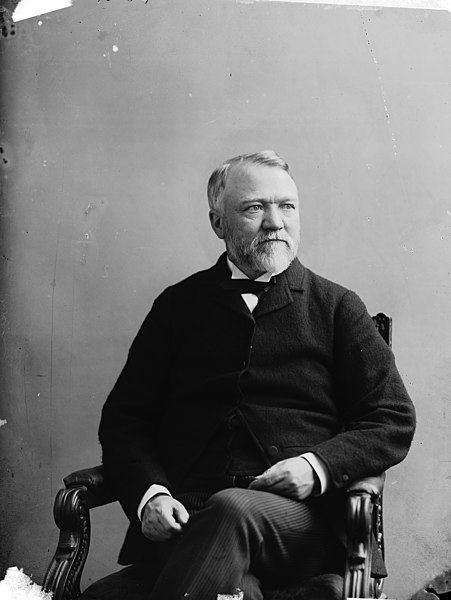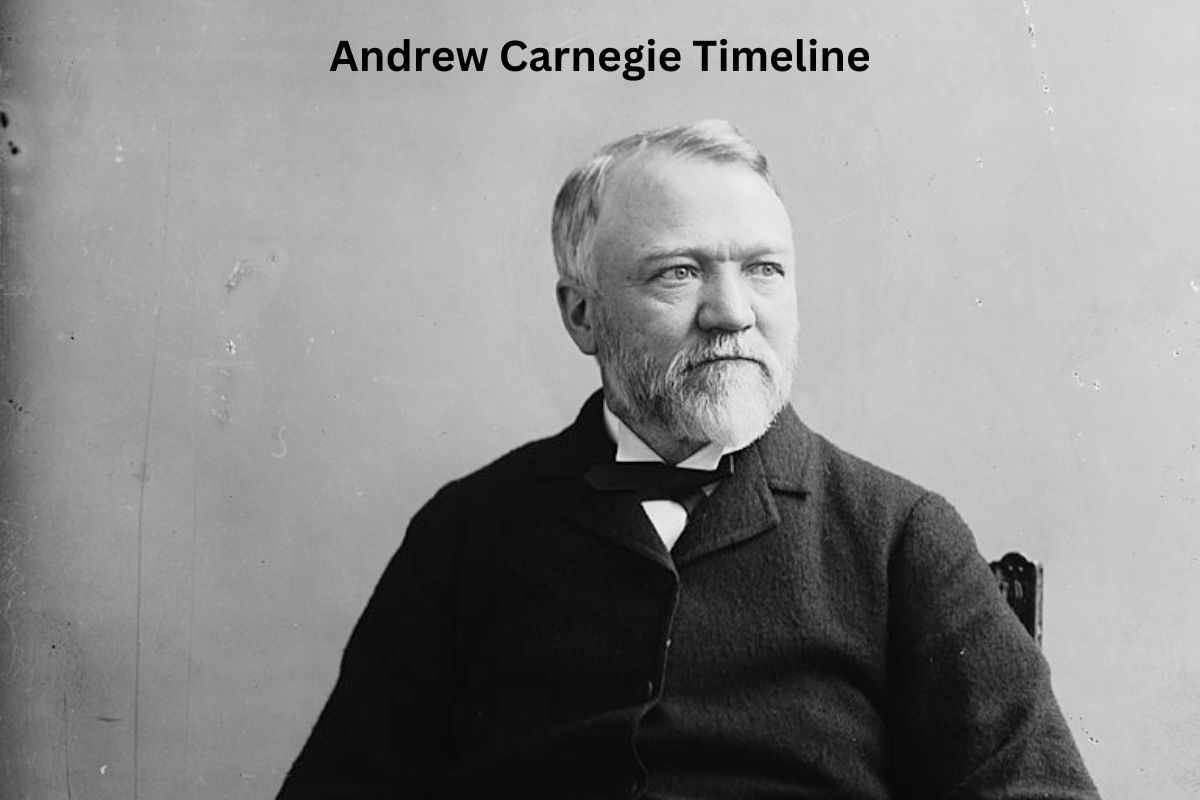Andrew Carnegie (1835-1919) was a Scottish-American industrialist and philanthropist who played a pivotal role in the development of the American steel industry.
His remarkable rags-to-riches story, from impoverished immigrant to one of the wealthiest individuals of his time, is a testament to his business acumen and vision.
Carnegie’s legacy extends beyond industry, as he dedicated his later years to philanthropy, leaving a lasting impact on education, culture, and international peace initiatives.
| Year | Event |
|---|---|
| 1835 | Andrew Carnegie is born in Dunfermline, Scotland. |
| 1848 | Carnegie’s family emigrates to the United States and settles in Allegheny City, Pennsylvania (now part of Pittsburgh). |
| 1853 | At the age of 18, Carnegie takes a job as a bobbin boy in a cotton factory, his first job in the United States. |
| 1855 | Carnegie gets a job as a telegraph messenger boy for the Pennsylvania Railroad Company. |
| 1859 | Carnegie becomes a telegraph operator and begins investing in various business ventures, including the Adams Express Company. |
| 1861-1865 | Carnegie serves as the Superintendent of the Military Telegraphs for the Union Army during the American Civil War. |
| 1865 | After the war, Carnegie focuses on the steel industry and starts investing in ironworks and steel mills. |
| 1870 | Carnegie co-founds the Keystone Bridge Company, which specializes in manufacturing steel bridges. |
| 1873 | Carnegie establishes the J. Edgar Thomson Steel Works, a major steel manufacturing facility. |
| 1889 | Carnegie Steel Company is formed after several mergers and acquisitions. |
| 1892 | The Homestead Strike occurs at Carnegie Steel’s Homestead, Pennsylvania, plant, leading to a violent labor dispute. |
| 1901 | Andrew Carnegie sells Carnegie Steel to J.P. Morgan’s U.S. Steel Corporation for $480 million, making him one of the richest individuals in the world. |
| 1904 | Carnegie publishes “The Gospel of Wealth,” an essay outlining his philosophy on wealth and philanthropy. |
| 1905 | Carnegie establishes the Carnegie Foundation for the Advancement of Teaching. |
| 1911 | The Carnegie Corporation of New York is founded, focusing on philanthropic endeavors. |
| 1919 | Carnegie dies on August 11 in Lenox, Massachusetts, at the age of 84. |
| 1937 | The Carnegie Endowment for International Peace is established. |
Timeline of Andrew Carnegie
1835: Andrew Carnegie is born in Dunfermline, Scotland
Andrew Carnegie was born on November 25, 1835, in a small town called Dunfermline in Scotland. He was born into a poor family, and his early life was marked by financial struggles.
1848: Carnegie’s family emigrates to the United States and settles in Allegheny City, Pennsylvania (now part of Pittsburgh)
In 1848, when Carnegie was just 13 years old, his family decided to seek better economic opportunities and emigrated to the United States.
Also Read: Andrew Carnegie Accomplishments
They settled in Allegheny City, Pennsylvania, which is now part of Pittsburgh. The move to America was a significant turning point in Carnegie’s life and set the stage for his future success.

1853: At the age of 18, Carnegie takes a job as a bobbin boy in a cotton factory, his first job in the United States
Upon arriving in the United States, Andrew Carnegie began working immediately to support his family. At the age of 18, he took his first job as a bobbin boy in a cotton factory.
This was a physically demanding and low-paying job, but it was Carnegie’s first step into the American workforce.
1855: Carnegie gets a job as a telegraph messenger boy for the Pennsylvania Railroad Company
Carnegie’s career took a significant turn in 1855 when he secured a job as a telegraph messenger boy for the Pennsylvania Railroad Company. This job introduced him to the world of telegraphy and communication technology, and he quickly learned the ropes of this emerging field.
1859: Carnegie becomes a telegraph operator and begins investing in various business ventures, including the Adams Express Company
Four years after joining the Pennsylvania Railroad Company, Andrew Carnegie’s dedication and aptitude led to his promotion as a telegraph operator.
Also Read: Andrew Carnegie Facts
His income increased, allowing him to invest in various business ventures. One of his notable investments during this period was in the Adams Express Company, a successful transportation and logistics company.
1861-1865: Carnegie serves as the Superintendent of the Military Telegraphs for the Union Army during the American Civil War
During the American Civil War, Andrew Carnegie played a crucial role by serving as the Superintendent of the Military Telegraphs for the Union Army.
In this capacity, he was responsible for managing and maintaining the telegraph lines used for communication among military units. His organizational skills and dedication to his work were instrumental in helping the Union Army coordinate its movements and strategies.

1865: After the war, Carnegie focuses on the steel industry and starts investing in ironworks and steel mills
After the Civil War, Carnegie turned his attention to the burgeoning steel industry. He recognized the potential of steel as a vital material for construction and infrastructure.
Carnegie started investing in ironworks and steel mills, positioning himself to take advantage of the growing demand for steel in the post-war era.
1870: Carnegie co-founds the Keystone Bridge Company, which specializes in manufacturing steel bridges
In 1870, Carnegie co-founded the Keystone Bridge Company, a company that specialized in manufacturing steel bridges.
This venture allowed him to apply his knowledge of steel and engineering to create innovative and durable bridge structures. Carnegie’s involvement in this enterprise marked his growing influence in the steel industry.
1873: Carnegie establishes the J. Edgar Thomson Steel Works, a major steel manufacturing facility
In 1873, Carnegie established the J. Edgar Thomson Steel Works in Braddock, Pennsylvania. This facility became a major steel manufacturing plant and played a pivotal role in Carnegie’s rise in the steel industry.
The plant was named in honor of his mentor, J. Edgar Thomson, and became one of the most advanced steel production facilities of its time.
1889: Carnegie Steel Company is formed after several mergers and acquisitions
Carnegie’s strategic business acumen and a series of mergers and acquisitions led to the formation of the Carnegie Steel Company in 1889. This company became one of the largest and most influential steel producers in the United States.
Carnegie was known for adopting the latest technologies and practices in steel production, making his company highly competitive in the industry.

1892: The Homestead Strike occurs at Carnegie Steel’s Homestead, Pennsylvania, plant, leading to a violent labor dispute
In 1892, a significant labor dispute known as the Homestead Strike occurred at Carnegie Steel’s Homestead, Pennsylvania, plant. The conflict arose when Carnegie Steel sought to reduce labor costs by cutting wages for steelworkers.
Workers at the plant, organized by the Amalgamated Association of Iron and Steel Workers, resisted these changes, resulting in a violent and prolonged standoff between workers and management.
Ultimately, the strike was broken with the help of Pinkerton detectives and state militia, but it left a lasting stain on Carnegie’s reputation as a labor-friendly industrialist.
1901: Andrew Carnegie sells Carnegie Steel to J.P. Morgan’s U.S. Steel Corporation for $480 million, making him one of the richest individuals in the world
In one of the most significant business deals of the time, Andrew Carnegie sold Carnegie Steel to J.P. Morgan’s U.S. Steel Corporation in 1901. The deal was worth a staggering $480 million, making Carnegie one of the wealthiest individuals globally. This sale marked Carnegie’s exit from the steel industry and a shift towards his philanthropic endeavors.
1904: Carnegie publishes “The Gospel of Wealth,” an essay outlining his philosophy on wealth and philanthropy
In 1904, Andrew Carnegie published “The Gospel of Wealth,” an influential essay in which he articulated his views on wealth, responsibility, and philanthropy. He argued that individuals who amassed great wealth had a moral obligation to use their riches for the benefit of society.
Carnegie promoted the idea that wealthy individuals should give away their fortunes during their lifetimes to support causes that would improve the welfare of others.

1905: Carnegie establishes the Carnegie Foundation for the Advancement of Teaching
In 1905, Andrew Carnegie established the Carnegie Foundation for the Advancement of Teaching. This foundation was created to promote and improve education in the United States and later expanded its efforts to other countries.
It played a pivotal role in shaping education policy and institutions, including the establishment of the Carnegie Classification of Institutions of Higher Education.
1911: The Carnegie Corporation of New York is founded, focusing on philanthropic endeavors
In 1911, Andrew Carnegie founded the Carnegie Corporation of New York, a philanthropic organization dedicated to addressing various societal issues and promoting the well-being of humanity.
The corporation has supported a wide range of causes, including education, culture, scientific research, and international peace efforts.
1919: Carnegie dies on August 11 in Lenox, Massachusetts, at the age of 84
Andrew Carnegie passed away on August 11, 1919, in Lenox, Massachusetts, at the age of 84. At the time of his death, he had given away the majority of his vast fortune, leaving a lasting legacy of philanthropy and educational contributions.
1937: The Carnegie Endowment for International Peace is established
In 1937, the Carnegie Endowment for International Peace was established, building on Carnegie’s vision of promoting global harmony and conflict resolution. This organization conducts research and advocacy to advance international peace and understanding.
